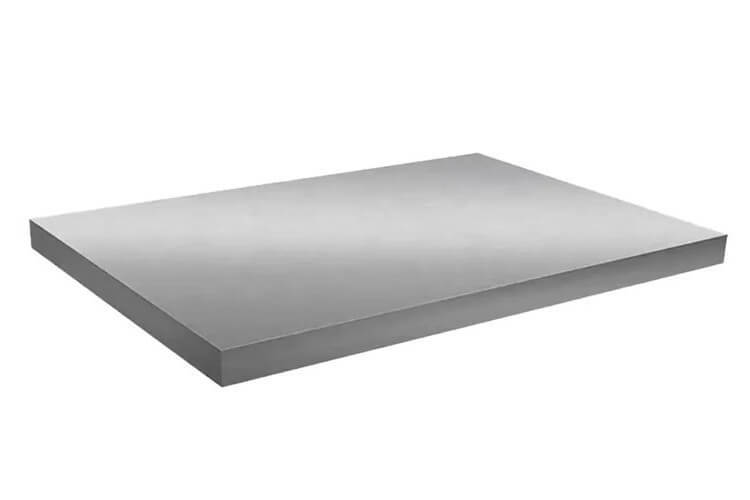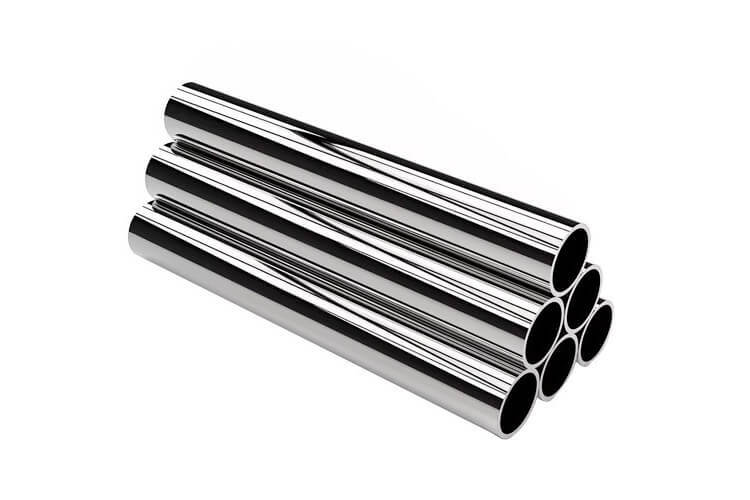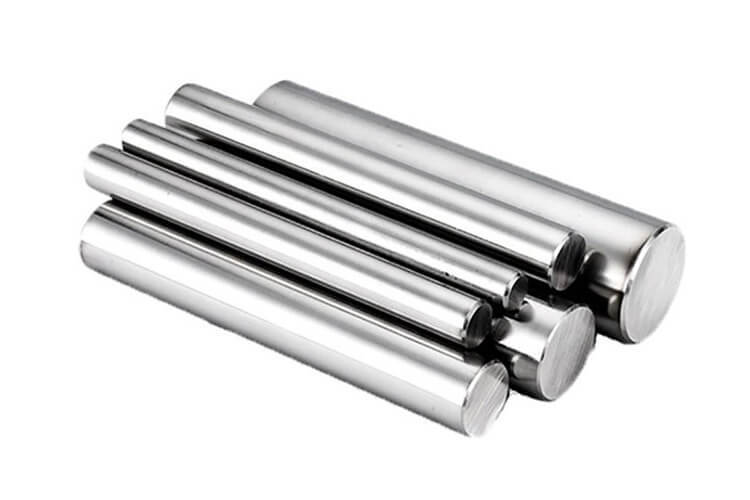Nickel Alloys: An In-Depth Overview
Feb 08,2025
Nickel alloys are a family of metallic materials in which nickel is the primary element. They are often combined with other metals like copper, chromium, molybdenum, iron, and aluminum to enhance specific properties. Known for their strength, corrosion resistance, and high-temperature performance, nickel alloys are indispensable in numerous industries, especially in extreme environments. Whether exposed to corrosive chemicals, high heat, or demanding mechanical stresses, nickel alloys offer a blend of versatility and reliability.
Types of Nickel Alloys
Nickel alloys can be categorized based on their composition and the particular properties they are designed to enhance. Below are some of the primary types.
1. Nickel-Copper Alloys (e.g., Monel)

Composition
These alloys are composed primarily of nickel (63%) and copper (30%), with small amounts of iron, manganese, and silicon.
Key Features
Corrosion Resistance: Excellent resistance to seawater, acids, and alkalines, which makes them highly effective in marine environments.
Strength and Toughness: Monel alloys, such as Monel 400, offer high tensile strength and good resistance to impact and wear.
Applications
Marine Engineering: Monel alloys are widely used in marine hardware, propellers, seawater piping, and fittings due to their resistance to seawater corrosion.
Chemical Processing: In industries such as pharmaceuticals, petrochemicals, and food processing, Monel alloys are used for valves, tanks, and pumps due to their resistance to a variety of corrosive chemicals.
Aerospace: Certain grades of Monel are also used in aerospace applications where materials must be strong and resistant to the elements.
2. Nickel-chromium Alloys (e.g., Inconel)
Composition
These alloys combine nickel with chromium (15-25%) and sometimes iron, molybdenum, or silicon for added strength and oxidation resistance.
Key Features
Heat Resistance: Nickel-chromium alloys are particularly valued for retaining strength and resisting oxidation at extremely high temperatures (up to 2,000°F or 1,100°C).
Oxidation Resistance: The high chromium content allows these alloys to form a stable oxide layer, protecting them from further oxidation, and making them suitable for high-temperature applications.
Applications
Aerospace: Inconel alloys are used extensively in jet engines, turbine blades, rocket engines, and other components exposed to extreme temperatures.
Power Generation: They are used in nuclear reactors, boilers, and gas turbines where both high-temperature performance and corrosion resistance are critical.
Chemical Processing: Inconel 625 is often used in chemical reactors and heat exchangers in industries requiring resistance to aggressive chemicals.
3. Nickel-Iron Alloys (e.g., Alloy 200, Alloy 201)
Composition
These alloys are made of nearly pure nickel (99% or more) with small amounts of iron (up to 1%) and other elements for enhanced properties.
Key Features
Corrosion Resistance: Excellent resistance to a wide variety of corrosive environments, particularly in aqueous (water-based) applications.
Cryogenic Performance: Retains its toughness and strength even at extremely low temperatures, making it ideal for cryogenic systems.
Magnetic Properties: Alloy 200, for example, has low magnetic permeability, making it useful in electronic and electrical applications.
Applications
Cryogenics: Due to its low-temperature toughness, Alloy 200 is often used in cryogenic tanks, liquefied natural gas (LNG) applications, and vacuum pumps.
Food Processing: Nickel alloys in this category are also used in food handling equipment where cleanliness and corrosion resistance are essential.
Pharmaceutical Manufacturing: Non-reactive to drugs, Alloy 200 is often used in pharmaceutical reactors and tanks.
4. Nickel-Molybdenum Alloys (e.g., Hastelloy)
Composition
These alloys are typically composed of nickel and molybdenum (15-30%) with other elements like chromium, iron, and cobalt for enhanced corrosion resistance.
Key Features
Superior Corrosion Resistance: Known for outstanding resistance to acids like hydrochloric acid, sulfuric acid, and chlorine. They are highly resistant to stress corrosion cracking, a common issue in many alloys exposed to chloride environments.
High-Temperature Stability: Excellent performance at both high and low temperatures.
Applications
Chemical Processing: Hastelloy is widely used in reactors, pumps, and heat exchangers in industries dealing with strong acids.
Nuclear Power: Hastelloy alloys are used in nuclear reactors and other high-pressure applications due to their ability to withstand harsh environments.
Marine Engineering: Hastelloy’s corrosion resistance is also applied in marine environments, particularly in areas exposed to seawater and aggressive chemicals.
5. Nickel-Copper-Chromium Alloys (e.g., Incoloy)

Composition
Composed mainly of nickel, chromium, and iron, with varying amounts of other elements like molybdenum and carbon.
Key Features
High Resistance to Oxidation and Carburization: These alloys are particularly effective in environments where both high temperature and corrosive gases are present, such as gas turbines.
Versatility: They are adaptable across various industrial sectors, offering reliable performance at elevated temperatures and in corrosive environments.
Applications
Furnaces: Incoloy alloys are used in industrial furnaces, heat exchangers, and other high-temperature applications that require resistance to oxidation and carburization.
Power Plants: Used for steam generators, turbine blades, and other critical components that must endure heat and corrosive environments.
Oil and Gas: Commonly applied in oil refineries and gas pipelines, where materials need to withstand corrosive media and high pressure.
Properties of Nickel Alloys
Nickel alloys are highly valued across industries for their unique properties, which are essential for specific applications.
Corrosion Resistance
Nickel alloys are especially resistant to corrosion from a variety of environments, including seawater, acids, and alkalis. This makes them invaluable in industries like marine, chemical, and petrochemical.
High-Temperature Performance
Many nickel alloys (like Inconel and Hastelloy) are designed to withstand extreme heat, maintaining their mechanical strength and structural integrity in high-temperature environments, such as jet engines, gas turbines, and power generation systems.
Oxidation Resistance
Nickel alloys, especially those containing chromium, form a protective oxide layer on their surface when exposed to high temperatures, preventing further degradation from oxidation.
Cryogenic Performance
Nickel alloys such as Alloy 200 maintain their toughness and strength even at cryogenic temperatures, making them suitable for applications in liquefied natural gas (LNG) storage and spacecraft technology.
Formability and Weldability
Most nickel alloys offer good formability, meaning they can be fabricated into various shapes and sizes, and they are typically easy to weld, making them ideal for complex structures and applications.
Applications of Nickel Alloys

Nickel alloys are found in some of the most demanding industries, where both performance and durability are critical.
Aerospace and Aviation
Jet engines, turbine blades, heat exchangers, and rocket components all rely on nickel alloys to endure extreme temperatures, pressure, and corrosive gases.
Chemical Processing
Hastelloy and other nickel alloys are commonly used in chemical reactors, pumps, valves, and tanks in industries such as petrochemicals, pharmaceuticals, and food processing.
Power Generation
Used in nuclear reactors, turbines, steam generators, and boilers, nickel alloys handle the harsh conditions of power plants.
Marine Engineering
Nickel-copper alloys, like Monel, are preferred for marine hardware, propellers, and submarine components due to their superior resistance to seawater corrosion.
Oil and Gas
Offshore drilling platforms and subsea pipelines use nickel alloys to ensure longevity and reliability under high pressure and corrosive conditions.
Electronics and Electrical
Nickel alloys are often found in electrical connectors, switches, and circuit boards, where their resistance to oxidation and conductivity are key attributes.
Advantages and Disadvantages of Nickel Alloys
Advantages
Exceptional Corrosion Resistance: Critical in industries dealing with aggressive environments.
High-Temperature Strength: Reliable performance in extreme temperature conditions.
Versatility: Nickel alloys are adaptable to a wide range of industrial needs, from cryogenics to aerospace.
Formability and Weldability: Easy to fabricate and integrate into complex structures.
Disadvantages
Cost: Nickel alloys are generally expensive due to the high cost of nickel and the complexity of alloying processes.
Machinability: Some high-strength nickel alloys are more difficult to machine and may require special tools or processes.
Conclusion
Nickel alloys are some of the most reliable materials for industries that demand high performance under extreme conditions. Their superior resistance to corrosion, high-temperature durability, and strength make them essential in applications ranging from aerospace to chemical processing to marine engineering. While they come at a higher cost than other metals, their long-term reliability and performance in harsh environments make them a valuable investment for critical infrastructure and machinery.
Latest News
Surface Selection of Stainless Steel
Jul 28,2025
Nickel Alloys: An In-Depth Overview
Feb 08,2025
View More


